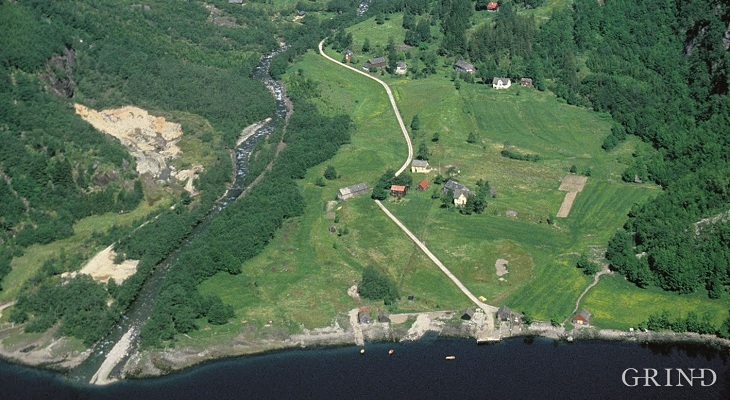Published: 19.02.2013 | Author: Nils Georg Brekke
Botnagrenda (Helge Sunde).
Fyksesundet and Botnagrenda present a fine experience of the landscape and cultural history; a geographically isolated local settlement with extensive cultural contact with the outside world.
In Botnagrenda innermost in Fyksesundet – today a deserted local hamlet – is one of the most authentic and important cultural landscapes in Hordaland, as it was at the end of the1800s. Here, in this settlement without a road, was a thriving local community, and one of the first youth associations in Hordaland was established here. On the hilly farm Skåro, halfway into the Fykse sound there lived some gifted people. Two brothers of a large group of siblings became mayors and representatives at the Storting: Geirmund (1851-54) and Nils (1871-85). A third brother, Johannes, became bishop at Nidaros in 1892. Nils’ son, Nils Nilsen Skaar also became a Storting representative (1910-24).
“The fiddle workshop in Vigøer's parish”
In one of the first volumes of “Bergens Adressecontoirs Efterretninger”; in the year 1766, we find an article about “The Fiddle Workshop in Vigøer’s Parish”. It is the special fiddles of Isak Botnen (1653-1759) and his son Trond Botnen (1713-72) the contributor refers to – “the Hardanger fiddle”- and about the skilled farmers in Vikøy. The contributor, with the signature “M” is probably Even Meldal, “chaplain to Vigøer” (1757-59). In his “Description of Hardanger and a part of Søndhordland – “ he writes:
“In this District the Inhabitants are particularly skilled, as we find here the best Fiddle-makers, Tinsmiths, Joiners, Turners, All types of Smiths, even Goldsmiths…”
The one who specially caught his interest was the fiddle-maker Trond Botnen. Innermost in Fyksesundet, in the small Botnagrenda settlement, lived these skilled craftsmen, who for all time has had their names linked to the Hardanger fiddle, the national instrument of the folk music.
The oldest known fiddle is dated to 1651 and is supposedly made by Ole Jonsson Jåstad (born 1621), from Ullensvang. “The Botna fiddles” nonetheless make up the core of this exquisite craft production in the 1700s, which was also spread to other rural communities through the markets at Kongsberg and Lærdal.
- Bjørndal, A. (1952) Nasjonalinstrumentet hardingfela 1651-1951. I: Norsk folkemusikk. Bergen, s. 33-92.
- Velure, J. (1973) Felemakarar i Hardanger. I: Brattebø, L. & Kvestad, J. Hardanger spelemannslag 25 år: 1948-1973. S. 48-56.




